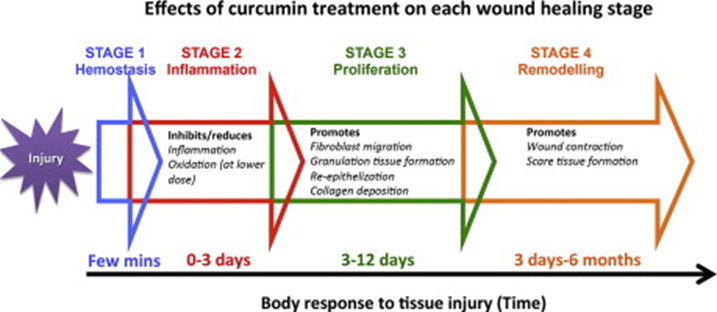A nurse is assisting with teaching a class of newly licensed nurses about the first phase of wound healing. Which of the following processes should the nurse include?
Proliferation
Inflammation
Maturation
Remodeling phase
The Correct Answer is B
A. Proliferation Phase:
Explanation: This phase involves the formation of new tissue to fill the wound space. It includes granulation tissue formation and wound contraction.
B. Inflammation Phase:
Explanation: This is the initial phase characterized by hemostasis and inflammation, aimed at stopping bleeding and preventing infection. Blood vessels constrict, platelets aggregate, and inflammatory cells arrive at the wound site.
C. Maturation Phase:
Explanation: Also known as the remodeling phase, it involves the remodeling and realignment of collagen fibers and the strengthening of scar tissue.
D. Remodeling Phase:
Explanation: Remodeling and maturation are often considered together as the final stage of wound healing, where collagen fibers reorganize and gain strength.

Nursing Test Bank
Naxlex Comprehensive Predictor Exams
Related Questions
Correct Answer is C
Explanation
A. High-fiber cereals:
High-fiber cereals may not be suitable for a soft diet, as they can be challenging to chew and may not meet the texture requirements of a soft diet.
B. Raw vegetables:
Raw vegetables are generally not recommended for a soft diet, as they can be difficult to chew and digest. Cooking or steaming vegetables can make them softer and more suitable for a soft diet.
C. Ground beef:
This is the correct answer. Ground beef can be included in a soft diet, especially if it is cooked to a tender consistency. It provides a good source of protein while meeting the requirements of a soft-textured diet.
D. Fruit with the skin:
Fruits with skins may pose a challenge for individuals on a soft diet, as the skin can be difficult to chew and swallow. Choosing peeled or canned fruits without skins may be more appropriate.
Correct Answer is D
Explanation
A. "My appetite will be decreased."
Explanation: Hyperglycemia is often associated with increased appetite rather than decreased appetite.
B. "I might experience blurry vision at times."
Explanation: This is correct. Blurry vision can be a symptom of hyperglycemia due to changes in the fluid levels in the eye caused by high blood sugar.
C. "My breath may have a fruity odor."
Explanation: Fruity breath odor is associated with diabetic ketoacidosis (DKA), which is a severe complication of diabetes. It occurs due to the production of ketones during uncontrolled diabetes, leading to this distinct odor. While it's related to high blood sugar, it's more specifically linked to DKA.
D. "I will be more thirsty than usual."
Explanation: Increased thirst is a classic symptom of hyperglycemia. When blood sugar levels are high, the body tries to flush out the excess sugar through increased urination, leading to dehydration and subsequently increased thirst.
Whether you are a student looking to ace your exams or a practicing nurse seeking to enhance your expertise , our nursing education contents will empower you with the confidence and competence to make a difference in the lives of patients and become a respected leader in the healthcare field.
Visit Naxlex, invest in your future and unlock endless possibilities with our unparalleled nursing education contents today
Report Wrong Answer on the Current Question
Do you disagree with the answer? If yes, what is your expected answer? Explain.
Kindly be descriptive with the issue you are facing.
